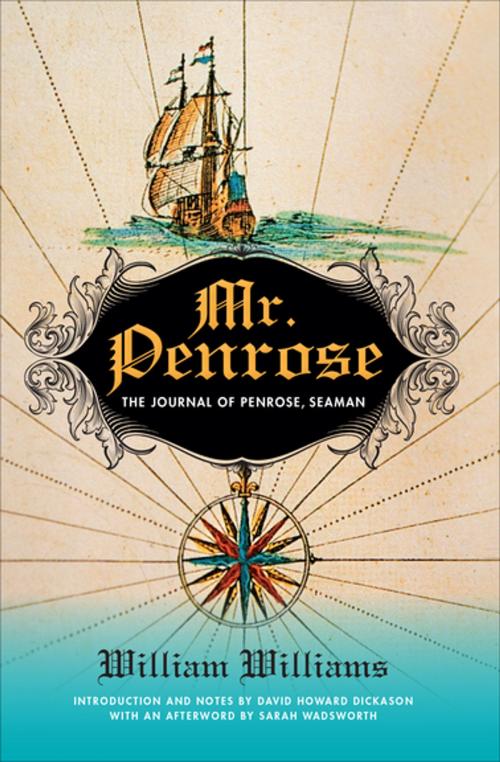| Author: | William Williams, David Howard Dickason | ISBN: | 9780253010520 |
| Publisher: | Indiana University Press | Publication: | November 9, 2013 |
| Imprint: | Indiana University Press | Language: | English |
| Author: | William Williams, David Howard Dickason |
| ISBN: | 9780253010520 |
| Publisher: | Indiana University Press |
| Publication: | November 9, 2013 |
| Imprint: | Indiana University Press |
| Language: | English |
An 18th century sailor is cast away in a multi-ethnic New World in this long-neglected classic regarded as the first American novel every written.
Mr. Penrose narrates the adventures of a Llewellin Penrose who flees an unhappy home life to seek his fortune on the high seas. Having learned the sailor’s trade, Penrose survives a series of nautical mishaps, only to be cast adrift on the Mosquito Coast. When rescue finally comes, Penrose refuses to abandon the new home he has made among the Indians.
Though not officially published until 1815—posthumously and bowdlerized—painter and seafarer William Williams’s dynamic adventure was actually written before 1780, making it unjustly forgotten as, arguably, the first American novel. Publishers may have been wary of “a work of imagination”, but Lord Byron could barely contain his enthusiasm for this unique tale: “I have never read so much of a book in one sitting in my life. He kept me up half the night, and made me dream of him the other half.”
Equal parts travel narrative, sea-merchant yarn and historical document, this original version of Mr. Penrose reflects on some of the most pressing moral and social issues of its time: imperialism, racial equality, religious freedom, and the nature of an ethical government. In fact, it contains the first unequivocal critique of slavery in a transatlantic novel and the most realistic portrayals of Native Americans in early American fiction. In the afterword, Sarah Wadsworth imparts new research on the author and his career, shedding light on the novel’s subjects and timely themes, and situating Mr. Penrose at the forefront of the American literary canon.
An 18th century sailor is cast away in a multi-ethnic New World in this long-neglected classic regarded as the first American novel every written.
Mr. Penrose narrates the adventures of a Llewellin Penrose who flees an unhappy home life to seek his fortune on the high seas. Having learned the sailor’s trade, Penrose survives a series of nautical mishaps, only to be cast adrift on the Mosquito Coast. When rescue finally comes, Penrose refuses to abandon the new home he has made among the Indians.
Though not officially published until 1815—posthumously and bowdlerized—painter and seafarer William Williams’s dynamic adventure was actually written before 1780, making it unjustly forgotten as, arguably, the first American novel. Publishers may have been wary of “a work of imagination”, but Lord Byron could barely contain his enthusiasm for this unique tale: “I have never read so much of a book in one sitting in my life. He kept me up half the night, and made me dream of him the other half.”
Equal parts travel narrative, sea-merchant yarn and historical document, this original version of Mr. Penrose reflects on some of the most pressing moral and social issues of its time: imperialism, racial equality, religious freedom, and the nature of an ethical government. In fact, it contains the first unequivocal critique of slavery in a transatlantic novel and the most realistic portrayals of Native Americans in early American fiction. In the afterword, Sarah Wadsworth imparts new research on the author and his career, shedding light on the novel’s subjects and timely themes, and situating Mr. Penrose at the forefront of the American literary canon.















